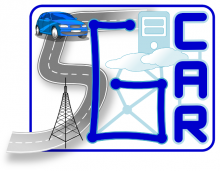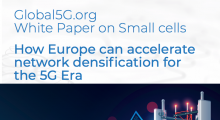5GCAR: Cooperative Perception for Maneuvers of Connected Vehicles

Benefits for the Automotive Industry
Road traffic crashes have huge societal and economic impacts through fatalities and injuries. Improving road safety is top priority for the automotive industry and European policy.
5G will bring new capabilities that will take the industry to a safer future, while bringing opportunities to improve mobility, comfort and convenience.
5G Capacities and Functionalities
In terms of 5G functionalities, 5GCAR has investigated ultra-reliable and low latency sidelink communication. Proposed concepts for 5GCAR's sidelink-based V2X technology include a network-assisted discovery mechanism, reference signal and synchronisation signal design, adjacent channel interface mitigation, radio-resource management and power control and scheduling mechanisms. The sidelink components can complement cellular communications to enhance V2X service reliability. The combination of sophisticated tracking algorithms like the particle filter and radio-based positioning are key to improving positioning accuracy.
Enhanced Mobile Broadband (eMBB): extending cellular coverage and improving network capacity. Ultra-reliable low latency communications: applications requiring high reliability and low latency connectivity, e.g. mission-critical services. Strong security and availability requirements.
About this 5GCAR Automotive Demonstration
Scenario summary: a vehicle is travelling behind a slow truck obscuring the view of other vehicles travelling in the opposite direction. Overtaking can be really risky. With 5G, 4K video can be streamed from a front camera placed on the truck. Now the driver has a clear vision of the situation and can decide if it is safe to overtake.
Cooperative perception is enabled by a combination of 5G-V2V and 4G-V2I communication. 5G provides ultra-reliable low-latency V2V communication for video streaming optimised by enhanced sensor information, while 4G provides long-range collision predictions /warnings for non-line-of-sight scenarios, based on in-vehicle object recognition and multi-modal sensor data sharing.
Location: Linas (France)
Expected date: June 2019
Vertical Partners: Bosch, PSA
Also involved: Huawei, Orange, CTAG
Other partners: Ericsson (coordinator), Chalmers University of Technology,CTTC, Kings College London, Marben, Nokia, Sequans, Viscoda
Other 5GCAR demonstrations on automotive include: Lane Merge Coordination and Vulnerable Road User Protection This video shows all three cases, which collectively show the potential of connected driving. The demo took place at the UTAC-CERAM test track in Linas, France.



